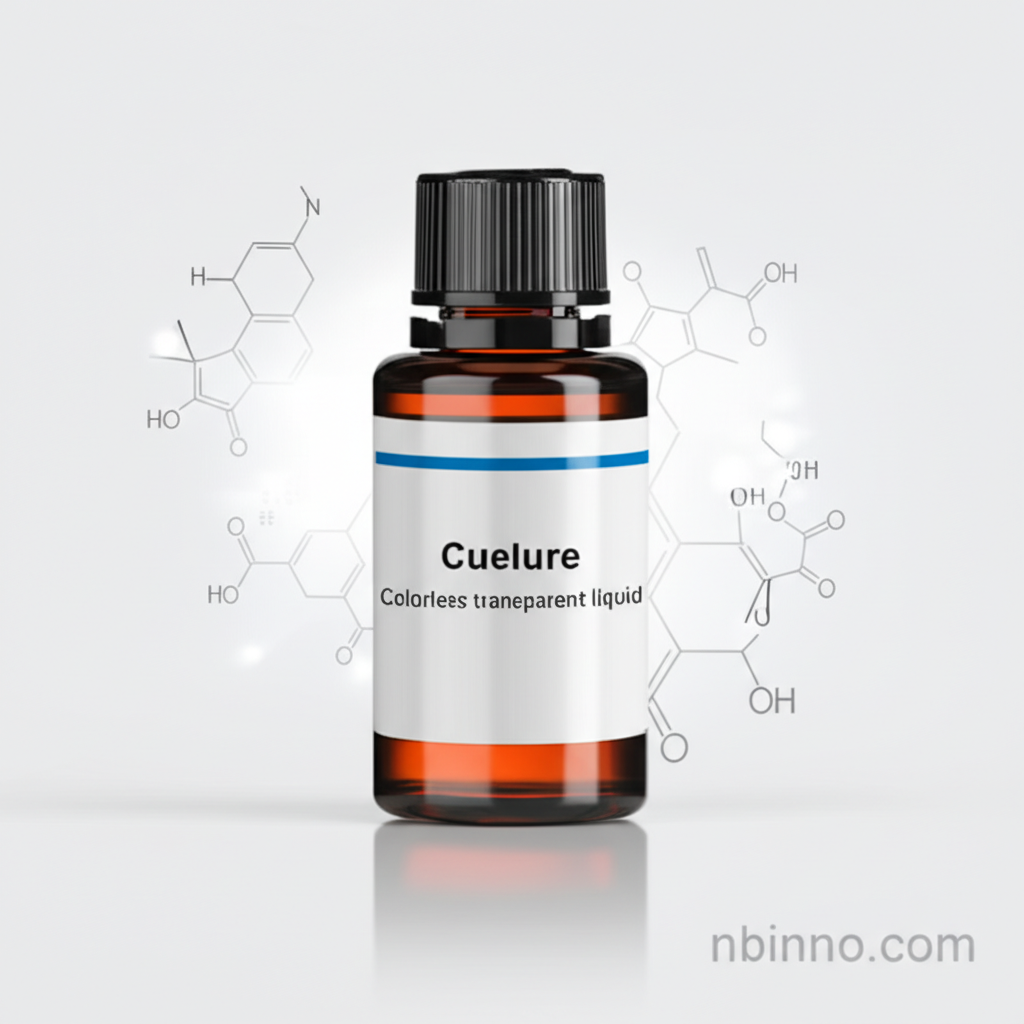Cuelure: The Essential Attractant for Melon Fly Control and Agricultural Pest Management
Discover the power of Cuelure (CAS 3572-06-3) as a critical tool for targeted pest management. This article explores its application in attracting male fruit flies, enhancing monitoring programs, and supporting sustainable agricultural practices. Learn why leading suppliers in China offer Cuelure for effective pest control solutions.
Get a Quote & SampleCuelure: Your Partner in Precision Pest Control

Cuelure (CAS 3572-06-3)
As a specialized chemical attractant, Cuelure is indispensable for the effective monitoring and control of fruit flies, notably the melon fly. Our commitment as a trusted supplier in China ensures you receive high-purity Cuelure, formulated for maximum efficacy in your pest management programs. When you choose to buy Cuelure from us, you invest in precision, efficiency, and sustainability for your agricultural operations.
- Unrivaled Attractant Power: Cuelure is scientifically proven to draw male fruit flies, enabling precise population tracking and management. Explore how to buy Cuelure for your specific needs.
- Integrated Pest Management (IPM) Essential: This attractant is a cornerstone of IPM, allowing for targeted pest capture in traps, thereby reducing the need for broad-spectrum pesticides. Request a quote for bulk Cuelure today.
- High Purity Assurance: We pride ourselves on supplying Cuelure with a high assay (99%min), guaranteeing consistent performance and reliability for agricultural monitoring and control.
- Strategic Pest Forecasting: Utilize Cuelure to predict and forecast pest populations, allowing for proactive and timely interventions. Partner with a reliable manufacturer in China for your Cuelure supply.
Advantages of Choosing Cuelure
Targeted Pest Attraction
Cuelure's specificity for male fruit flies like the melon fly allows for precise monitoring, ensuring that control measures are focused where they are most needed. This targeted approach is crucial for sustainable agriculture.
Reduced Pesticide Use
By effectively luring pests into traps, Cuelure significantly lowers the reliance on chemical insecticides, contributing to environmental protection and the development of healthier crops. Consider purchasing Cuelure for a greener approach.
Cost-Effective Monitoring
Implementing Cuelure in your pest surveillance programs offers a cost-effective method for early detection and population assessment, preventing larger infestations and crop losses. Inquire about Cuelure price for bulk purchases from our China-based supplier.
Key Applications of Cuelure
Pest Monitoring & Surveillance
Deploying Cuelure in traps is a standard practice for monitoring the presence and density of fruit fly populations in agricultural areas. This helps in early detection and timely interventions.
Integrated Pest Management (IPM)
As a key component of IPM, Cuelure is used in conjunction with other control methods to manage pest populations sustainably, reducing chemical inputs and environmental impact.
Pest Population Forecasting
The data gathered from Cuelure traps aids in predicting future pest outbreaks, allowing farmers and agricultural professionals to plan and implement preventative measures effectively.
Research & Development
Cuelure is also utilized in entomological research to study insect behavior, olfactory responses, and the development of novel pest control technologies.
